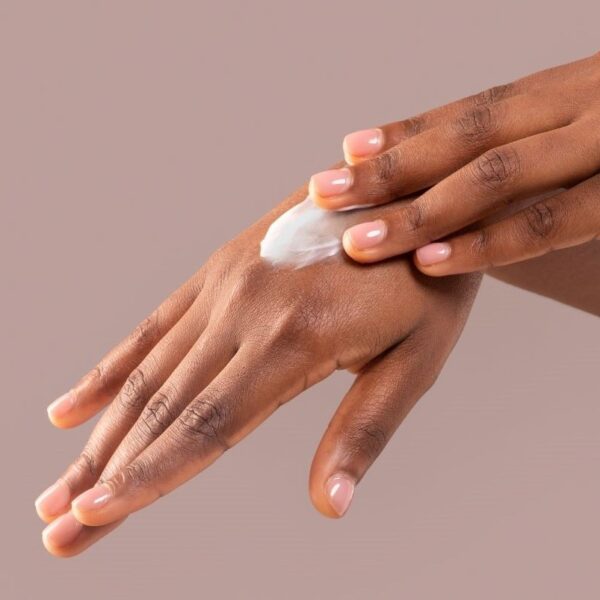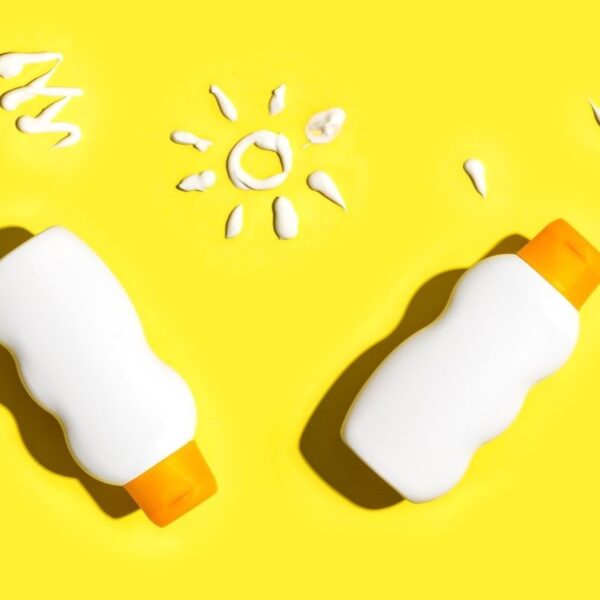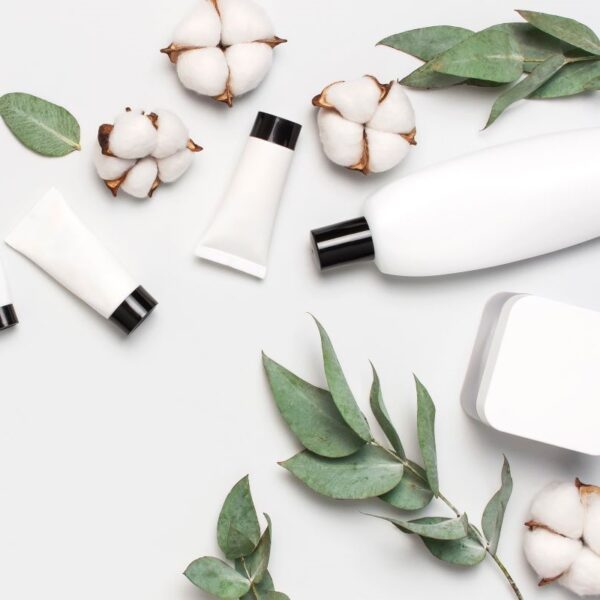Methyl salicylate is known for its analgesic, anti-inflammatory, and bactericidal effects, making it a popular ingredient in many personal care products. It’s also commonly used as a flavoring agent and fragrance, especially in oral care products. However, because pure methyl salicylate is highly toxic, its use must be carefully controlled.
What is Methyl Salicylate?
Methyl salicylate (methyl 2-hydroxybenzoate) is the methyl ester of salicylic acid. Its chemical formula is C8H8O3. Methyl salicylate occurs naturally in a variety of plants and can be distilled from these plants. One of the most common natural sources of methyl salicylate is wintergreen oil, which typically contains up to 99% methyl salicylate. Methyl salicylate can also be derived synthetically by esterifying salicylic acid with methanol. This is the most common method of production for commercial use.
Chemical structure of methyl salicylate. Source: Wikipedia
Use of Methyl Salicylate in Cosmetics and Personal Care
Methyl salicylate is a salicylic acid derivative used as a topical analgesic for the relief of pain in musculoskeletal, joint, and soft-tissue disorders. Methyl salicylate ointment is a common dermatology drug with analgesic, anti-inflammatory, and bactericidal effects. Methyl salicylate ointments are used for acute rheumatoid arthritis, low back pain and muscle pain, and itching.
Methyl salicylate is also commonly used in a diluted form as a flavoring agent and preservative in personal care products such as toothpaste, mouthwash, soaps, and hair products, among others.
Applications in Cosmetics and Personal Care Products
| Function | Applications |
| Flavoring Agent | Methyl salicylate is a prominent ingredient in oral care applications as a flavoring ingredient. It provides a fresh sensation to these products. It can also be used at up to 0.65% in mouth sprays. |
| Soothing Agent | Methyl salicylate is used in aromatherapy to provide a soothing effect. It’s also used in cosmetics as a warming agent and in sports massage products as a rubefacient. As an anti-inflammatory, it’s sometimes incorporated into liniments and ointments for joint and muscle pains. |
| Fragrance Ingredient | Methyl salicylate is used as a fragrance ingredient in hydroalcoholic fragrances (e.g. aftershave, eau de toilette, cologne). |
Product Examples
| Type | Examples |
| Oral Care | Dentifrices, Toothpaste, Mouthwash |
| Hair Care | Shampoo, Conditioner, Hair Serum, Anti-Dandruff Preparations |
| Skin Care | Skin Mists, Soothing Gels, Creams, Lotions |
| OTC Preparations | Muscle Pain Gels, Muscle Relaxants, Ointments |
Properties of Methyl Salicylate
| Appearance at 25°C | Colorless to slightly yellow liquid |
|---|---|
| Molecular Weight g/mol | 152.15 |
| Density at 25°C (g/cm3) | 1.17 |
| Refractive Index at 20°C | 1.5350- 1.5380 |
| Specific Gravity (at 25°C) | 1.1800- 1.1850 |
| Solubility | Soluble in alcohol, fatty and essential oils, and glacial acetic acid. Slightly soluble in water. |
| Salicylic Acid content | Max 0.1% |
| Boiling Point (°C) | 222 |
| Melting Point (°C) | -9 |
| Acid Value (mg KOH/g) | Max 1 |
| Odour | Characteristic wintergreen odor |
| Taste | Wintergreen taste |
| Shelf Life | 12-18 months |
| Stability | Stable. No oxidizing properties. It can react with oxidizing materials. |
Recommended Storage and Handling
- Stable when stored in its original package, tightly sealed, in a cool (46-90°F) and dry location out of direct heat and light.
- It is recommended to store the product in a well-ventilated area.
Typical Formulations
Soothing Ointment
Here is an example of a formulation table for a soothing ointment with methyl salicylate in an emollient base that exhibits therapeutic benefits:
| TRADE NAME | INCI NAME | FUNCTION | % Wt. |
| Cocopure SP501 | Cocoglycerides (and) Cera Alba (and) Euphorbia Cerifera | Emollient | Q.s to 100% |
| Camphor | Camphor | Active Ingredient | 4.0 |
| Menthol Crystal | Menthol | Active Ingredient | 4.0 |
| Methyl Salicylate | Methyl Salicylate | Active Ingredient | 12.0 |
| Denatured Alcohol | Ethanol | Solvent | 0.5 |
| Total | 100.0 | ||
Source: Knowde
Formulation Procedure
- Load Cocopure SP501 in a clean container. Start heating to 55-65°C.
- Add camphor, menthol crystal, methyl salicylate, and alcohol. Mix and maintain temperature.
- Pour into a clean container and cool the mixture to room temperature.
Physical Properties
- Appearance at 25°C: Slightly yellowish translucent gel
- pH not applicable
- Density 0.95 – 0.96
Methyl Salicylate and Menthol Hydroalcoholic Clear Gel
Here is an example of a formulation table for a clear gel with methyl salicylate and menthol:
| PHASE | INCI NAME | % Wt. |
| A | Methyl salicylate | 15.00 |
| Menthol | 7.00 | |
| Carbopol® 971P NF Polymer | 0.30 | |
| Ethanol | 15.00 | |
| Propylene Glycol | 20.00 | |
| B | Hydroxypropyl cellulose (Klucel® HXF) | 0.60 |
| Ethanol | 20.00 | |
| Deionized water | 21.5 | |
| C | 2-Amino-2-methyl-1 propanol (20% aqueous solution) | 0.4 |
| Lavender fragrance | 0.2 | |
| Total | 100.0 | |
Clear Gel Formulation Process:
- PHASE A: Dissolve menthol in the methyl salicylate by heating to 40-45°C. Disperse Carbopol® 971P NF polymer into the oil mixture using a propeller stirrer at low agitation. Add ethanol and propylene glycol and mix well. Keep the solution covered during mixing to prevent evaporation.
- PHASE B: Disperse the hydroxypropyl cellulose in ethanol using a suitable homogenizer. Add the deionized water and homogenize to obtain a clear, viscous solution.
- Add PHASE B ingredients to PHASE A ingredients and mix thoroughly using a propeller stirrer.
- PHASE C: Slowly add the 20% 2-amino-2-methyl-1-propanol aqueous solution while mixing with a paddle or U-shaped low-shear impeller to minimize air entrapment. Add fragrance and mix to obtain a clear, viscous gel.
Source: Lubrizol
Formulation Considerations
- Methyl salicylate should be added at an ambient temperature during the formulation procedure at around 30-35°C.
- Use of methyl salicylate in microemulsions: Using methyl salicylate in spreadable topical medications requires adding other hydrophobic ingredients in the oil phase in microemulsion preparation. Menthol, IPM (Isopropyl Myristate), and IPP (Isopropyl Palmitate) are prominent hydrophobic additives soluble in or miscible with methyl salicylate. The addition of these hydrophobic ingredients should be considered for good spreadability and feel of the final emulsion product.
Safety & Regulatory Considerations
| FDA Information | GRAS Listed by FEMA. Safe to use in OTC and Personal Care. Toxic by ingestion; use in foods restricted by FDA. |
| EU Information | According to Health Canada, Methyl salicylate can be used as a non-medicinal ingredient in topical, oral, and nasal natural health products. |
| Canadian Information | Methyl salicylate can be used as a non-medicinal ingredient in topical, oral, and nasal natural health products, according to Health Canada. |
| Cosmetic Ingredient Review (CIR) Information | The CIR concluded in their review in 2018 that methyl salicylate, and all salicylates, are safe in the current practice of use in cosmetics. |
Safety & Toxicity of Methyl Salicylate
- Methyl salicylate is toxic by ingestion. Ingestion of 15 to 25 mL of this compound can be fatal to humans. The FDA restricts its use in foods.
- Pure methyl salicylate is lipid soluble and can pass through the skin, posing a threat of severe, rapid-onset salicylate poisoning.
- Methyl salicylate toxicity symptoms include nausea, vomiting, gastritis, diarrhea, respiratory stimulation, labored breathing, pulmonary edema, convulsions, and coma.
- Application of methyl salicylate liquid on the skin and eyes produced severe irritation in rabbits. Oral, subcutaneous, or dermal administration of methyl salicylate in test animals produced specific developmental abnormalities affecting the eyes, ears, and central nervous system.
- Methyl salicylate should be considered a weak skin sensitizer in humans and an eye irritant.
- Some studies in both animals and humans in the peer-reviewed literature suggest that methyl salicylate may slightly irritate the skin at doses present in commercial products. While irritation can occur at high doses, the OECD indicates that methyl salicylate does not require classification as a skin irritant according to the criteria of EC No 1272/2008 on classification and labeling of chemicals. Sufficient evidence from human tests shows methyl salicylate is not an irritant up to doses of 12%.
Acceptable Limits or Maximum Usage
The recommended maximum concentration of methyl salicylate in cosmetic products according to SCCS is listed in the table below:
| Product | % Composition |
| Hydroalcoholic-Based Fragrances | 0.600% |
| Rinse-Off Skin & Hair Products (Except Hand Wash Products) | 0.060% |
| Hand Wash Products | 0.600% |
| Leave On Skin & Hair Products (Non-Aerosol) | 0.060% |
| Face Makeup Products | 0.050% |
| Lipsticks & Lip Balm | 0.030% |
| Eye Make Up Products & Makeup Remover | 0.002% |
| Toothpaste | 2.520% |
| Mouthwash | 0.600% |
| Mouth spray | 0.650% |
| Deodorant Spray | 0.003% |
| Hair products (Spray/Aerosol) | 0.009% |
| Body Lotion Spray | 0.040% |
Identification Numbers
| INCI Name | Methyl 2-hydroxybenzoate |
| CAS Number | 119-36-8 |
| EC Number | 204-317-7 |
| FEMA Number | 2745 |
Fun Facts About Methyl Salicylate
- Some plants release methyl salicylate when damaged by insects.
- Since methyl salicylate is volatile, when an injured plant releases the substance it can spread through the air to distal parts of the same plant or even to neighboring plants, functioning as a danger warning.
Additional Resources
- Opinion on Methyl Salicylate (CAS No 119-36-8) – European Commission
- Methyl Salicylate – ScienceDirect
- Methyl Salicylate – ChEBI
- Methyl Salicylate – The Good Scents Company
- Drug Approval Package: Methyl Salicylate 30% and Menthol 10% Topical Analgesic Liquid – U.S. Food and Drug Administration
- Summary Safety Review: Pain Relievers Containing Menthol, Methyl Salicylate, and Capsaicin – Health Canada
- Methyl Salicylate – ChemicalBook






